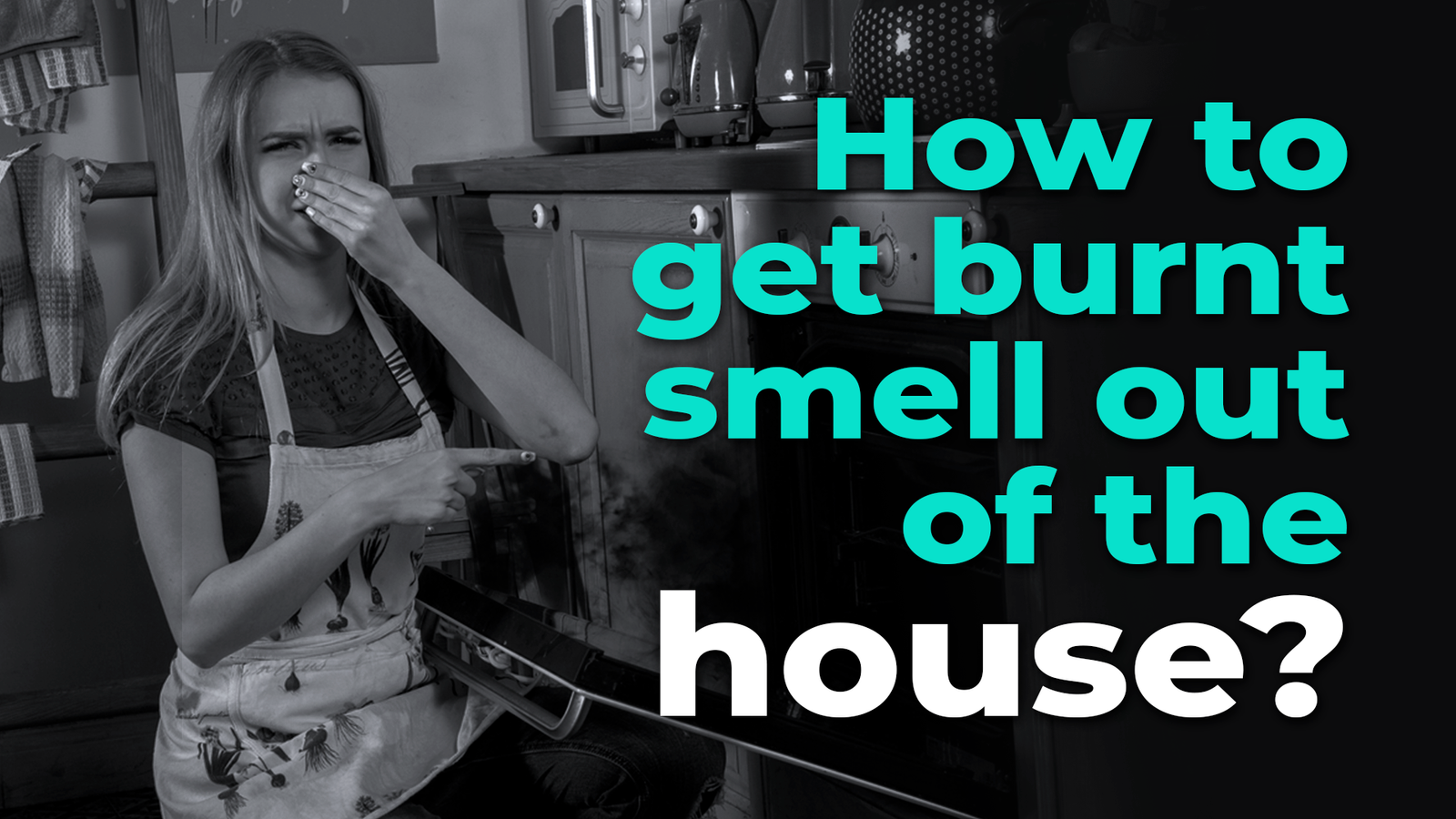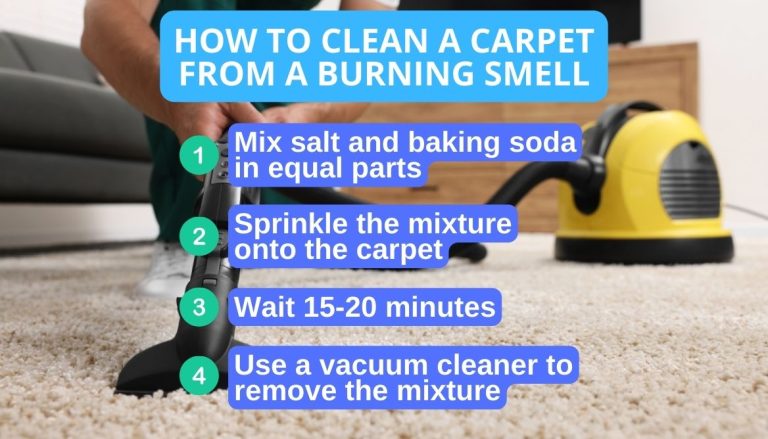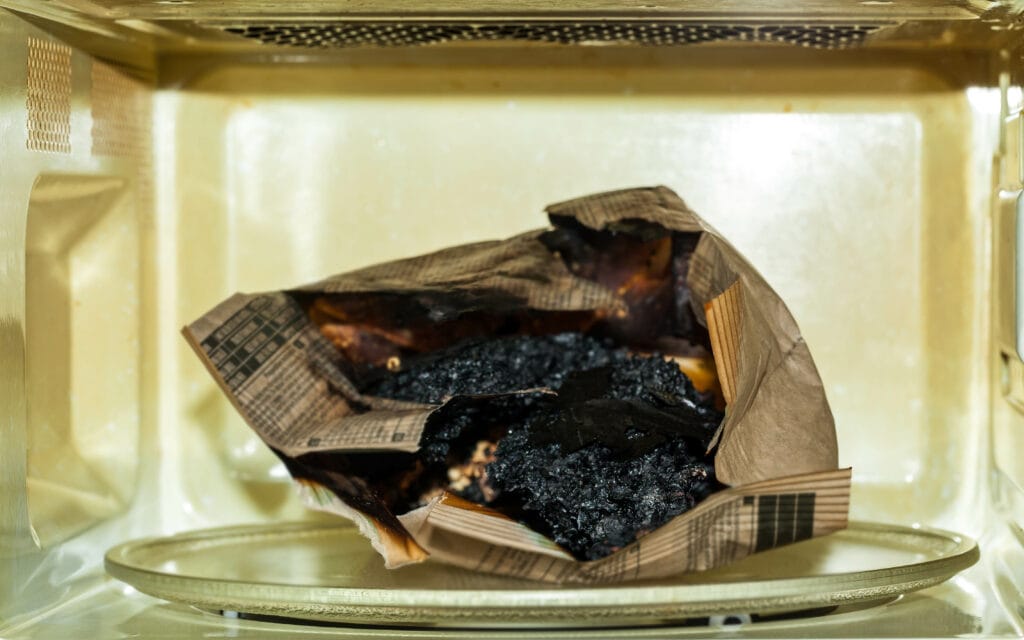How To Get Burnt Food Smell Out Of House

That burnt food smell lingering in your home? It’s a common problem, and thankfully, one you can often tackle yourself. This guide provides a step-by-step approach to eliminating that unwelcome odor, focusing on techniques you can implement before calling in a professional.
First Response: Immediate Actions
Quick action is crucial in minimizing the spread and intensity of the burnt food smell. These steps should be your immediate response:
- Turn Off the Heat Source: Immediately turn off the stove, oven, or any other appliance that caused the burning.
- Ventilate the Area: Open windows and doors to create cross-ventilation. Turn on exhaust fans in the kitchen and bathrooms.
- Remove the Source: Carefully dispose of the burnt food and any associated debris (e.g., burnt foil, charred paper towels).
- Boil Water with Vinegar or Citrus: Boil a pot of water with a cup of white vinegar or lemon/orange peels. The steam will help neutralize the odors.
Cleaning and Odor Removal
After the initial response, it’s time to focus on cleaning and actively removing the lingering smell. This involves targeting affected surfaces and employing odor-absorbing techniques.
Cleaning Surfaces
Burnt food smells cling to surfaces, so thorough cleaning is essential.
- Countertops and Backsplashes: Wipe down all countertops and backsplashes with a solution of warm water and dish soap. For stubborn stains, use a paste of baking soda and water.
- Oven and Stovetop: Clean the oven according to the manufacturer's instructions. A baking soda paste left overnight can loosen burnt-on food. Scrub the stovetop thoroughly, removing any burnt residue.
- Floors: Mop floors with a cleaning solution appropriate for the flooring type. Consider adding a cup of vinegar to the water for extra odor-fighting power.
- Walls and Cabinets: Wipe down walls and cabinets with a damp cloth and mild detergent. For painted surfaces, test in an inconspicuous area first.
Odor Absorption
Several materials are excellent at absorbing odors. Place these around your home to help eliminate the burnt food smell:
- Baking Soda: Place open boxes of baking soda in various rooms, especially near the source of the smell.
- Activated Charcoal: Similar to baking soda, activated charcoal is a powerful odor absorber. You can find it in briquette form or specialized odor-absorbing bags.
- Coffee Grounds: Place bowls of dry, unused coffee grounds around the house to absorb odors.
- Vinegar Bowls: Leave bowls of white vinegar in affected rooms overnight.
- Air Purifiers: Consider using an air purifier with a HEPA filter and activated carbon filter to remove airborne particles and odors.
HVAC System Considerations
Your HVAC system can play a significant role in spreading the burnt food smell throughout your home. It's important to address this aspect to completely eliminate the odor.
Air Filter Replacement
The first step is to replace your air filter. A dirty air filter can trap odors and recirculate them throughout your home. A clean filter will improve air quality and help to remove the burnt food smell.
- Type: Use a high-efficiency particulate air (HEPA) filter for better filtration.
- Frequency: Change your air filter every 1-3 months, or more frequently if you have pets or allergies.
- Location: Air filters are typically located in the return air duct of your HVAC system.
Duct Cleaning (When to Call a Pro)
If the burnt food smell persists even after cleaning and replacing the air filter, the odor may be trapped in your ductwork. In this case, you might consider duct cleaning.
Important: Duct cleaning is a complex process that requires specialized equipment and knowledge. We strongly recommend hiring a qualified HVAC professional for duct cleaning. DIY duct cleaning can damage your ductwork and potentially release harmful contaminants into your home.
Warning: Improperly sealed or damaged ductwork can draw in odors from attics, crawl spaces, or even outside, exacerbating the problem. A professional can identify and repair any leaks or damage.
Air Duct Sanitization (Proceed with Caution)
Some HVAC professionals offer air duct sanitization services, which involve spraying a disinfectant into the ductwork to kill bacteria and mold. While this can help to eliminate odors, it's important to consider the potential risks:
- Chemical Sensitivity: Some people are sensitive to the chemicals used in air duct sanitization.
- Effectiveness: The effectiveness of air duct sanitization is debated.
- Cost: Air duct sanitization can be expensive.
If you're considering air duct sanitization, research the chemicals used and ask about potential side effects. Choose a reputable HVAC company with experience in air duct sanitization.
Preventing Future Burnt Food Smells
Prevention is always better than cure. Here are some tips to prevent future burnt food incidents:
- Pay Attention While Cooking: Never leave food unattended while cooking, especially on the stovetop or in the oven.
- Use Timers: Set timers to remind you when food is cooking.
- Check Food Regularly: Check food regularly to prevent burning.
- Clean Up Spills Immediately: Clean up any spills or splatters in the oven or on the stovetop immediately to prevent them from burning.
- Proper Ventilation: Ensure your kitchen has adequate ventilation by using exhaust fans while cooking.
When to Call a Professional HVAC Technician
While many burnt food smell issues can be resolved with DIY methods, there are times when it's best to call a professional HVAC technician:
- Persistent Odor: If the burnt food smell persists even after trying all the DIY methods, there may be a deeper issue within your HVAC system.
- Ductwork Concerns: If you suspect there may be damage or leaks in your ductwork, a professional can inspect and repair the system.
- HVAC System Malfunction: If you notice any signs of HVAC system malfunction, such as reduced airflow or unusual noises, contact a professional immediately.
- Duct Cleaning: Duct cleaning should always be performed by a qualified HVAC professional.
Cost Estimates for HVAC Services:
- Air Filter Replacement: $10 - $50 (DIY), $50 - $150 (Professional Installation)
- Duct Inspection: $75 - $200
- Duct Cleaning: $300 - $1000+ (depending on the size of the home and the complexity of the system)
- HVAC System Repair: $100 - $500+ (depending on the issue)
Tools and Materials You May Need:
- Dish soap
- Baking soda
- White vinegar
- Lemon or orange peels
- Spray bottles
- Cleaning cloths
- Mop and bucket
- Air filter
- Vacuum cleaner
- Activated charcoal
- Coffee grounds
Troubleshooting Common Issues
Issue: The burnt food smell is strongest in one particular room.
Solution: Focus your cleaning and odor-absorbing efforts on that room. Check for hidden sources of the smell, such as burnt food stuck in crevices or behind appliances.
Issue: The burnt food smell seems to be coming from the vents.
Solution: Replace your air filter immediately. If the smell persists, consider having your ductwork inspected by a professional.
Issue: I tried everything, but the smell is still there!
Solution: It's possible the smell has permeated soft materials like carpets, upholstery, or curtains. Consider having these professionally cleaned. As a last resort, you may need to repaint walls, as paint can absorb odors. Also consider ozone generators (odor removers), but use with caution and only in unoccupied spaces due to potential health hazards.
By following these steps, you can effectively eliminate the burnt food smell from your home and prevent future occurrences. Remember to prioritize safety and call a professional when needed. Good luck!







:max_bytes(150000):strip_icc()/GettyImages-1385189203-7adb2d5181b8405dafaf8e6a729f8c8f.jpg)


